Hawaii, known for its stunning landscapes and diverse flora and fauna, is home to various unique animal species.
Among these fascinating creatures are the big birds of Hawaii, a group of bird species characterized by their impressive size and distinct features.
These birds have captured the imagination of both locals and visitors alike, offering an enchanting glimpse into the rich biodiversity of the islands.
From the majestic Hawaiian goose, or Nene, to the striking I’o, or Hawaiian hawk, these big birds play an essential role in the ecological balance of Hawaii’s ecosystems.
In this essay, we will delve into the intriguing world of big birds in Hawaii, exploring their significance, the threats they face, and the efforts undertaken to protect and preserve these remarkable species.
9 Big Birds in Hawaii
Hawaii is home to various bird species, but it’s important to note that many of them are small or medium-sized rather than big birds. However, there are some relatively larger bird species in Hawaii. Here are nine examples:
1. Nene (Branta sandvicensis)
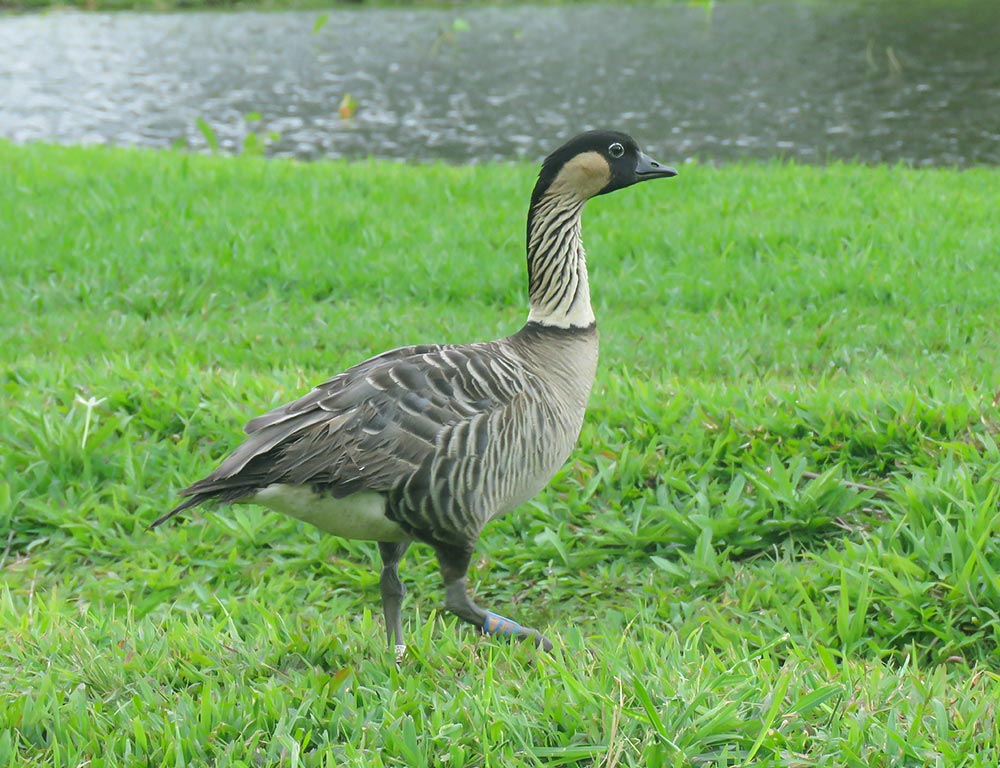
The Nene, scientifically known as Branta sandvicensis, holds the title of Hawaii’s state bird and is a rare and unique goose species.
Endemic to the Hawaiian Islands, it has adapted to life in the volcanic archipelago. Nene is recognized by their chestnut-coloured cheeks and neck, contrasting with a black crown and nape.
These birds are herbivorous, primarily feeding on grasses and other vegetation. Historically, they faced endangerment due to habitat loss and introduced predators, but dedicated conservation efforts have helped increase their populations.
Nene is often spotted in Hawaii’s national parks, showcasing the state’s commitment to preserving its unique avian inhabitants.
| Kingdom | Animalia |
| Phylum | Chordata |
| Clade | Dinosauria |
| Class | Aves |
| Order | Anseriformes |
| Family | Anatidae |
| Genus | Branta |
| Species | B. sandvicensis |
2. Hawaiian Hawk (Buteo solitarius)
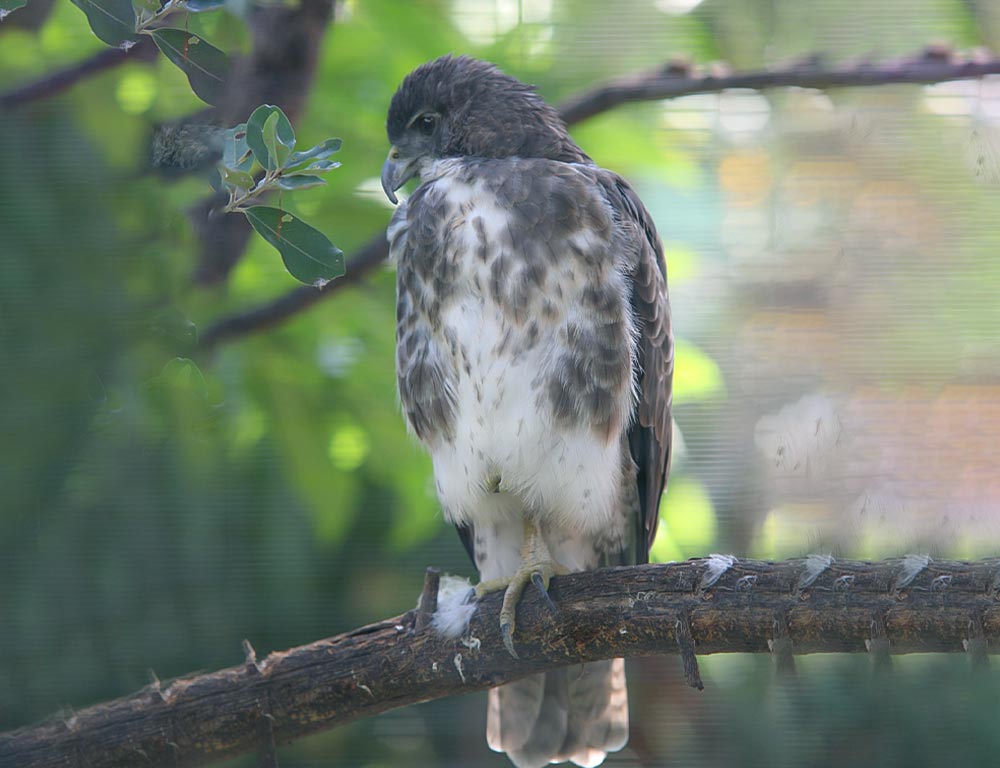
The Hawaiian Hawk, Buteo solitarius, is a raptor endemic to the Hawaiian Islands, making it one of the rarest hawks globally. Also known as the ‘Io, it is recognized by its dark plumage and distinctive calls.
These hawks inhabit various landscapes, from forests to grasslands, and feed on a diverse diet of birds, insects, and small mammals.
Their unique evolutionary path has led to specialized adaptations that set them apart from other hawks.
Conservation efforts focus on protecting their habitats, as the ‘Io faces threats from habitat destruction and introduced predators.
| Kingdom | Animalia |
| Phylum | Chordata |
| Clade | Dinosauria |
| Class | Aves |
| Order | Accipitriformes |
| Family | Accipitridae |
| Genus | Buteo |
| Species | B. solitarius |
3. Hawaiian Petrel (Pterodroma sandwichensis)
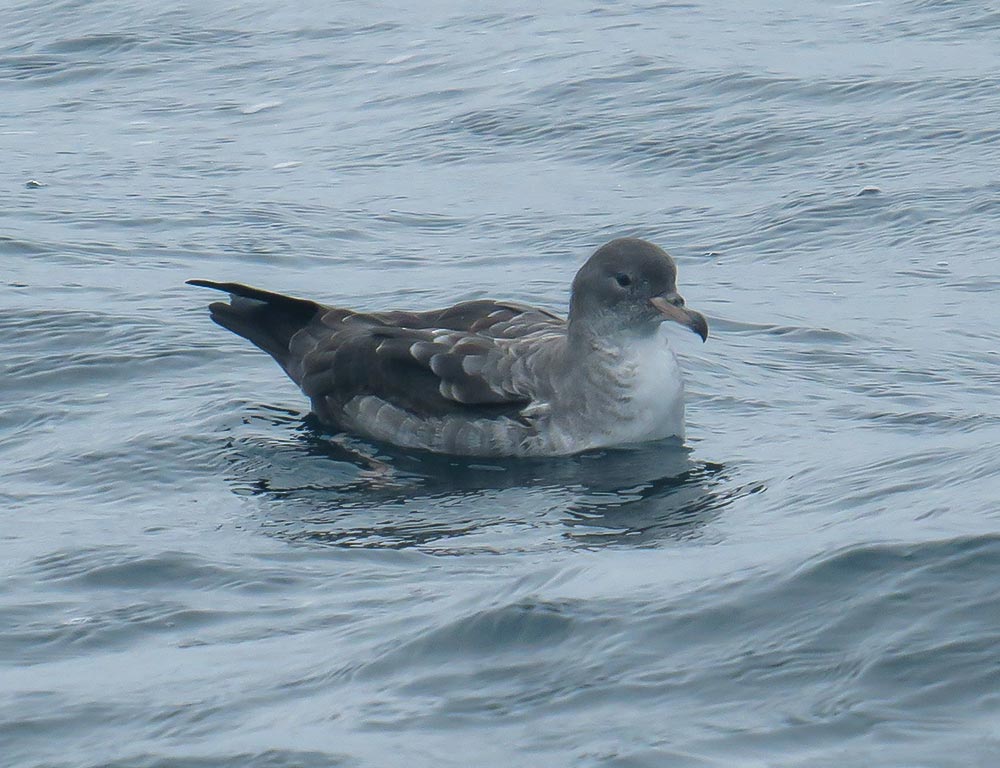
The Hawaiian Petrel, scientifically named Pterodroma sandwichensis, is a seabird endemic to the Hawaiian Islands, where it is known as the ‘Ua’u.
This pelagic bird is predominantly dark with a white underbelly and a distinctive dark “M” pattern on its upper wings. Hawaiian Petrels are skilled oceanic flyers, using their long wings to glide effortlessly over the open sea.
They primarily feed on fish and squid. These birds nest in burrows on remote Hawaiian islands, which are crucial for their survival.
Conservation efforts focus on protecting their nesting sites from invasive species and habitat degradation to ensure the continued existence of this unique seabird.
| Kingdom | Animalia |
| Phylum | Chordata |
| Clade | Dinosauria |
| Class | Aves |
| Order | Procellariiformes |
| Family | Procellariidae |
| Genus | Pterodroma |
| Species | P. sandwichensis |
4. Hawaiian Coot (Fulica alai)
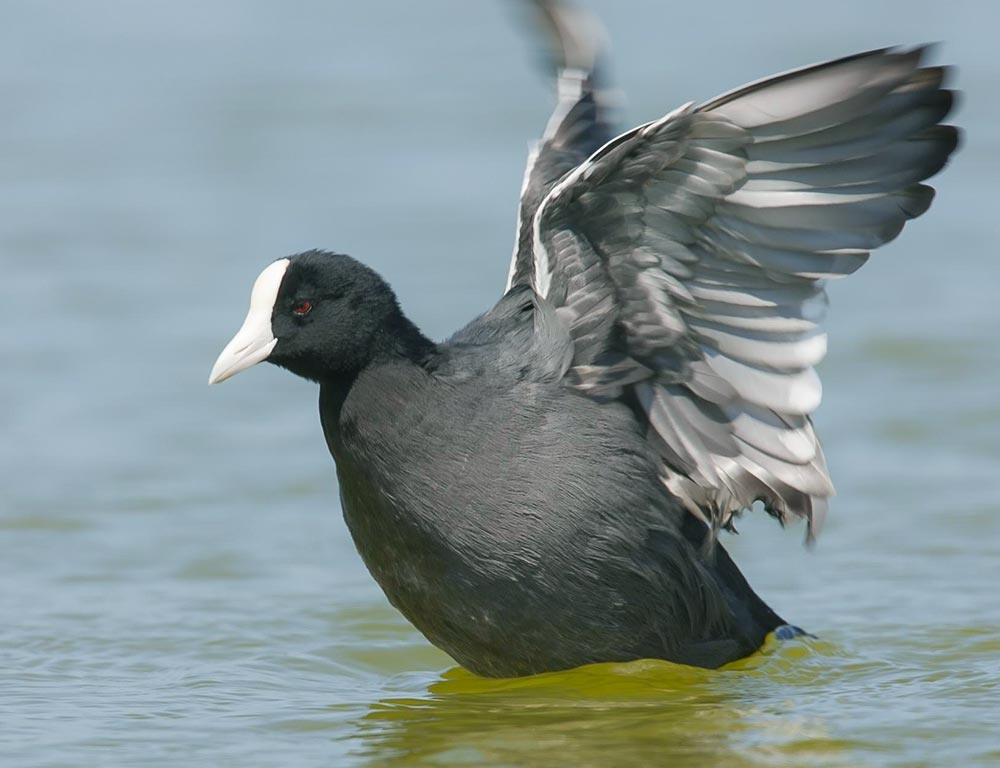
The Hawaiian Coot, Fulica alai, is a waterbird species endemic to the Hawaiian Islands. It is characterized by its black plumage, white frontal shield, and distinctive red eyes.
Hawaiian Coots inhabit wetland areas, including freshwater and brackish ponds. They are primarily herbivorous, feeding on aquatic plants and algae. These birds are known for their loud calls and energetic behaviours during courtship displays.
Hawaiian Coot populations have faced challenges due to habitat loss and degradation, and conservation efforts aim to protect and restore their wetland habitats to ensure their long-term survival.
| Kingdom | Animalia |
| Phylum | Chordata |
| Clade | Dinosauria |
| Class | Aves |
| Order | Gruiformes |
| Family | Rallidae |
| Genus | Fulica |
| Species | F. alai |
5. Hawaiʻi ʻAkepa (Loxops coccineus)
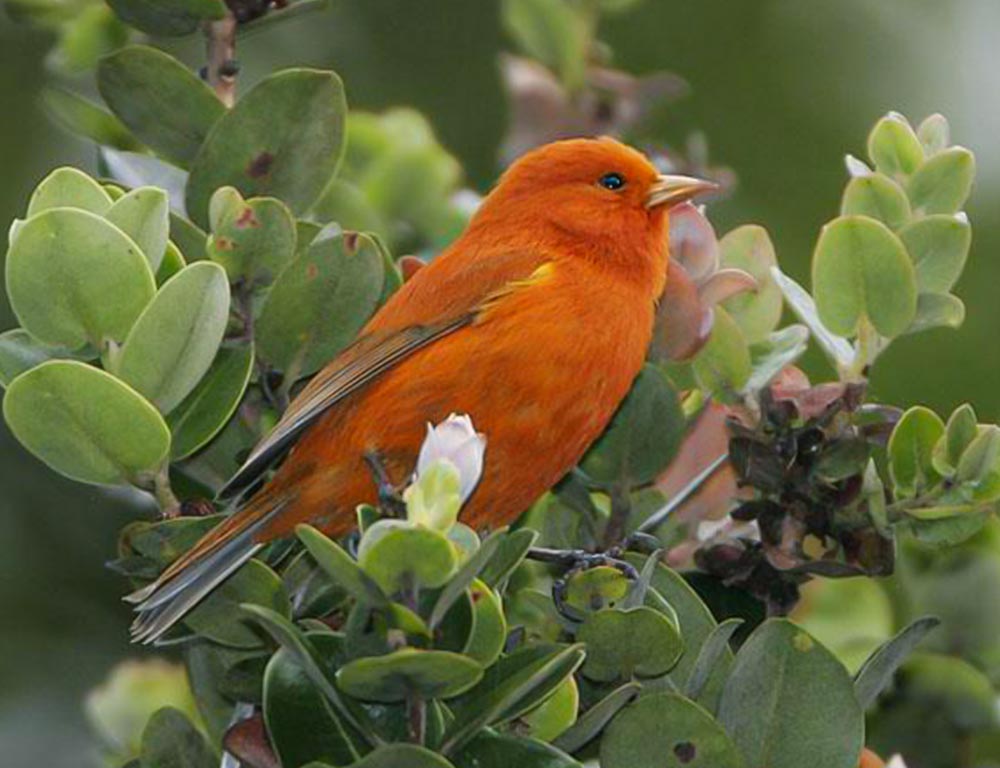
| Kingdom | Animalia |
| Phylum | Chordata |
| Clade | Dinosauria |
| Class | Aves |
| Order | Passeriformes |
| Family | Fringillidae |
| Genus | Loxops |
| Species | L. coccineus |
6. Chlorodrepanis virens (ʻĀkohekohe)
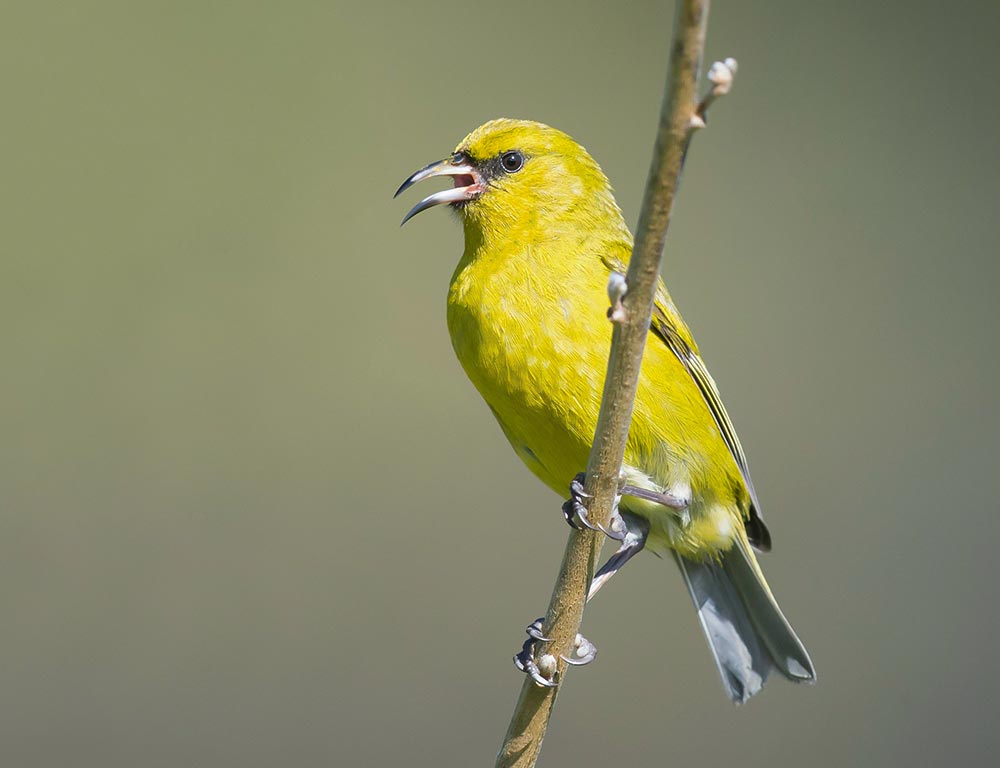
The ʻĀkohekohe, scientifically known as Chlorodrepanis virens, is a striking and endemic honeycreeper bird found exclusively in the high-elevation forests of Maui and the Big Island of Hawaii.
These birds are renowned for their vibrant plumage, featuring brilliant scarlet feathers on their upper parts and a contrasting white underbelly. They also possess unique curved bills, adapted for probing nectar from native Hawaiian flowers.
ʻĀkohekohe are critical pollinators for these plants and play a significant role in the ecological balance of their habitats. Conservation efforts focus on protecting their forested homes and restoring native flora, as these birds are vulnerable to habitat loss and introduced diseases.
| Kingdom | Animalia |
| Phylum | Chordata |
| Clade | Dinosauria |
| Class | Aves |
| Order | Passeriformes |
| Family | Fringillidae |
| Genus | Chlorodrepanis |
| Species | C. virens |
7. Laysan Albatross (Phoebastria immutabilis)
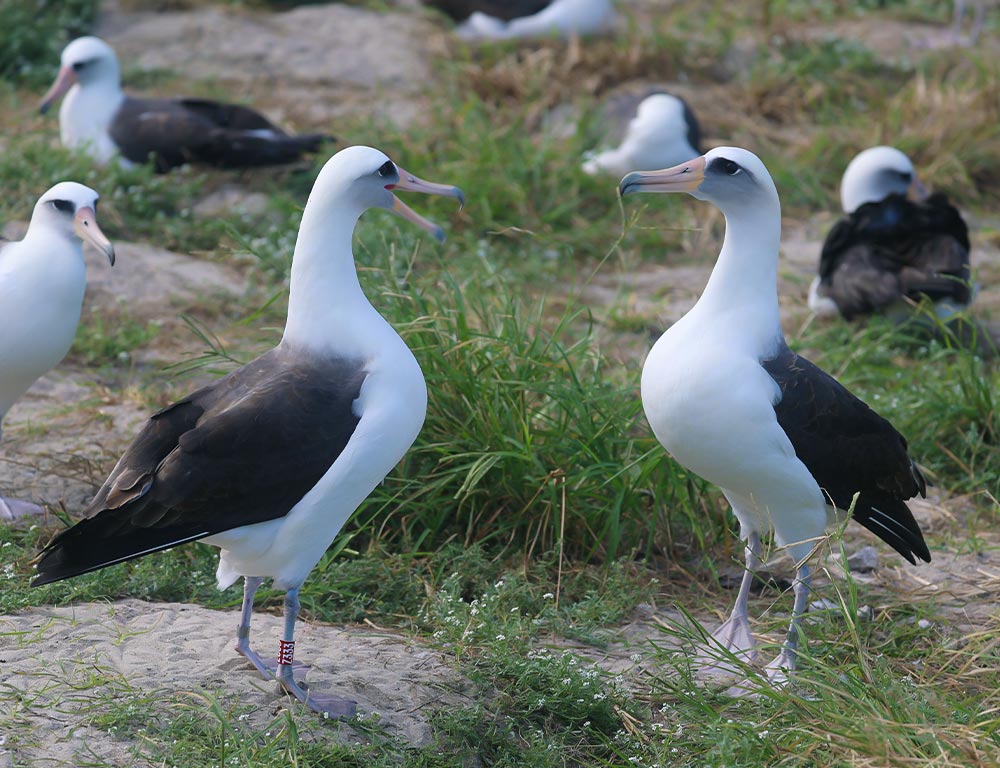
The Laysan Albatross, Phoebastria immutabilis, is a large seabird known for its remarkable ability to fly vast distances across the open ocean.
Recognized by their white plumage and large wingspan, they often glide effortlessly over the waves. Laysan Albatrosses primarily feed on fish, squid, and other marine organisms.
They are known for their elaborate courtship rituals, which include synchronized dancing and vocalizations. These birds nest on remote islands in the Pacific, including the Northwestern Hawaiian Islands.
Conservation efforts are crucial for protecting their breeding grounds from invasive species and plastic pollution, which poses a significant threat to these oceanic wanderers.
| Kingdom | Animalia |
| Phylum | Chordata |
| Clade | Dinosauria |
| Class | Aves |
| Order | Procellariiformes |
| Family | Diomedeidae |
| Genus | Phoebastria |
| Species | P. immutabilis |
8. Black-footed Albatross (Phoebastria nigripes)
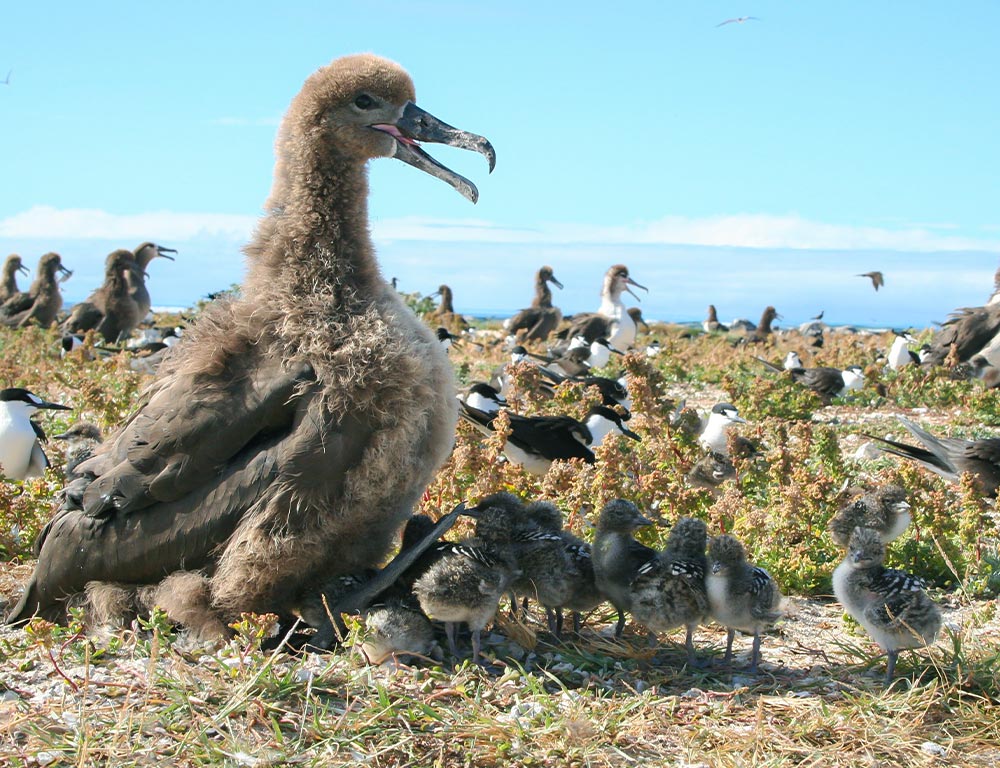
Phoebastria nigripes, or the Black-footed Albatross, is another remarkable seabird that spends most of its life on the open ocean. These birds are characterized by their black plumage, white face, and distinctive black feet.
Black-footed Albatrosses are skilled flyers, using their long wings to glide over the waves as they search for food. They primarily feed on fish and squid.
These birds nest on remote islands in the Pacific, with some populations found in the Northwestern Hawaiian Islands. Conservation efforts are vital to protect their breeding sites and reduce threats from fishing bycatch and ocean plastic pollution.
| Kingdom | Animalia |
| Phylum | Chordata |
| Clade | Dinosauria |
| Class | Aves |
| Order | Procellariiformes |
| Family | Diomedeidae |
| Genus | Phoebastria |
| Species | P. nigripes |
9. ʻElepaio (Chasiempis sandwichensis)
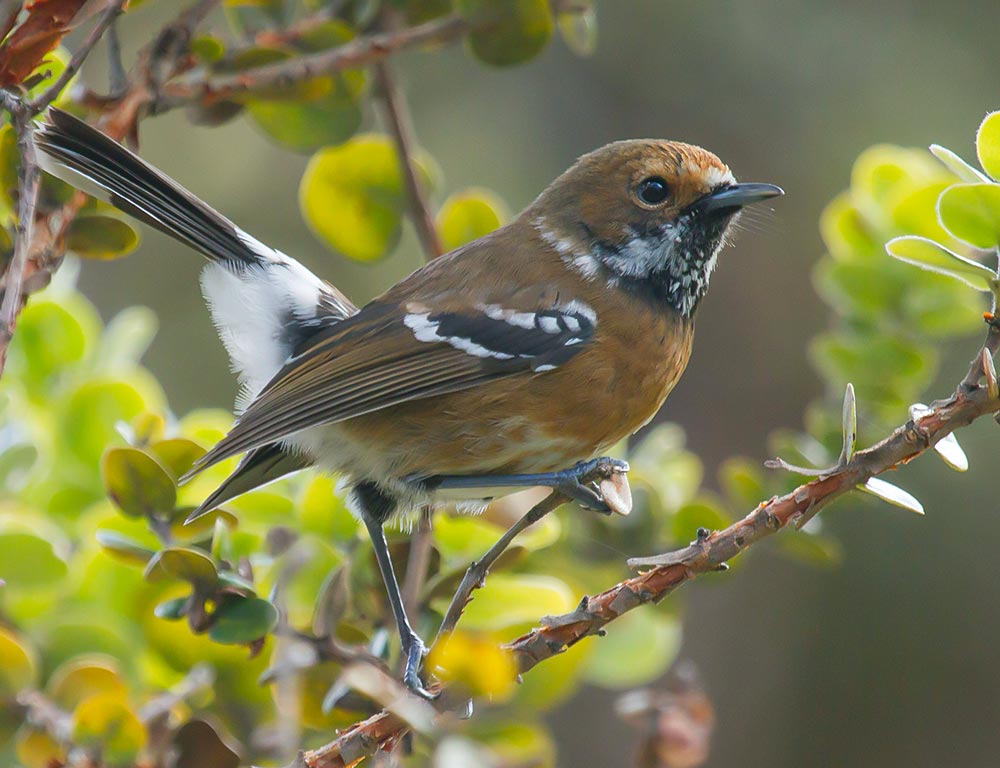
| Kingdom | Animalia |
| Phylum | Chordata |
| Clade | Dinosauria |
| Class | Aves |
| Order | Passeriformes |
| Family | Monarchidae |
| Genus | Chasiempis |
Conclusion
Big birds play an essential role in the unique ecosystem of Hawaii. The islands are home to a variety of large avian species, such as the Nene, Hawaiian Goose, and Hawaiian Hawk, each contributing to the ecological balance of the region.
These birds have adapted to the local environment over thousands of years and have become important symbols of Hawaii’s natural heritage. However, big birds in Hawaii face various challenges, including habitat loss, invasive species, and human impacts.
Conservation efforts are crucial to ensuring their survival and protecting the delicate ecosystem they inhabit.
By understanding the significance of big birds in Hawaii and taking proactive measures to safeguard their populations, we can preserve the rich biodiversity that makes the islands so exceptional..